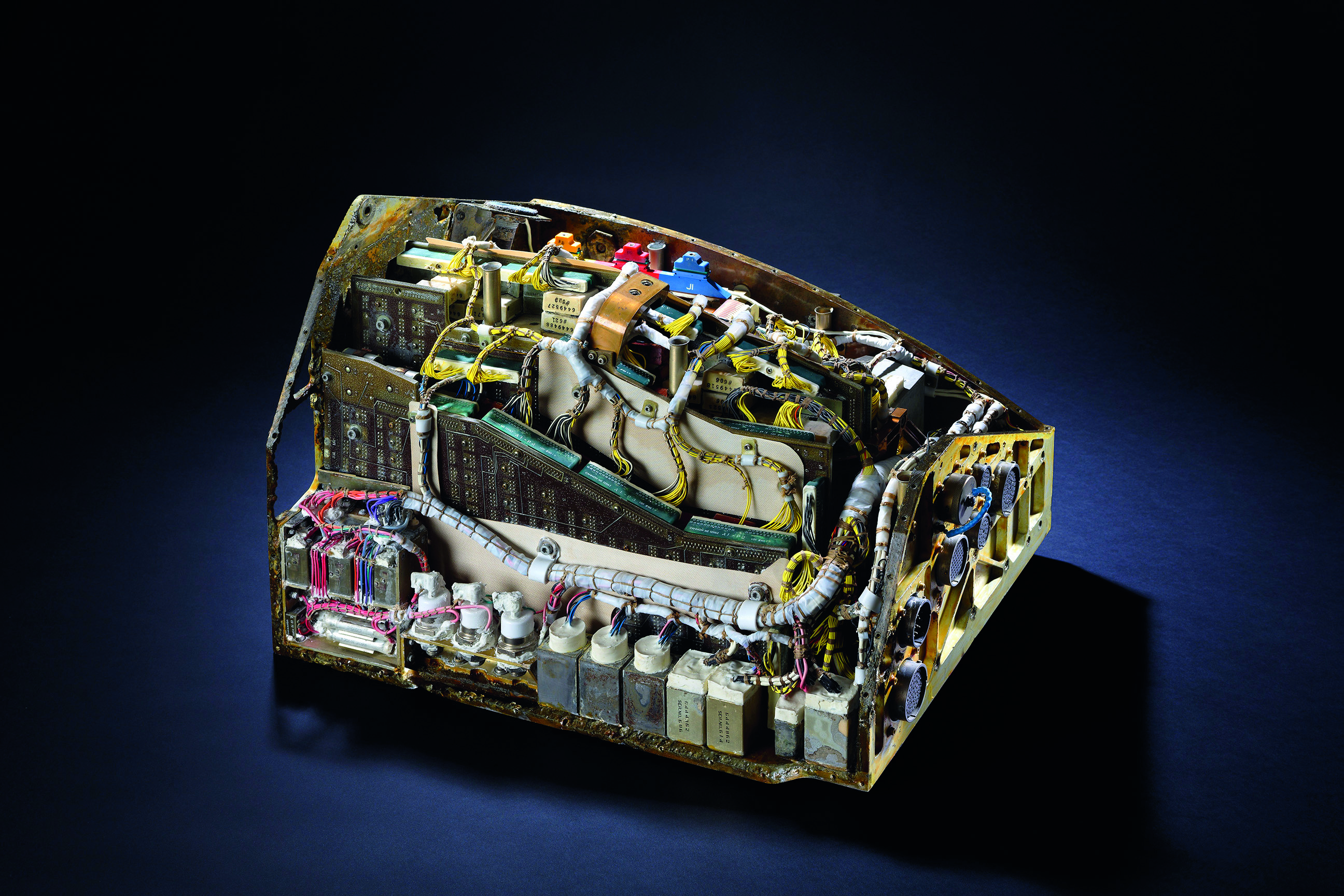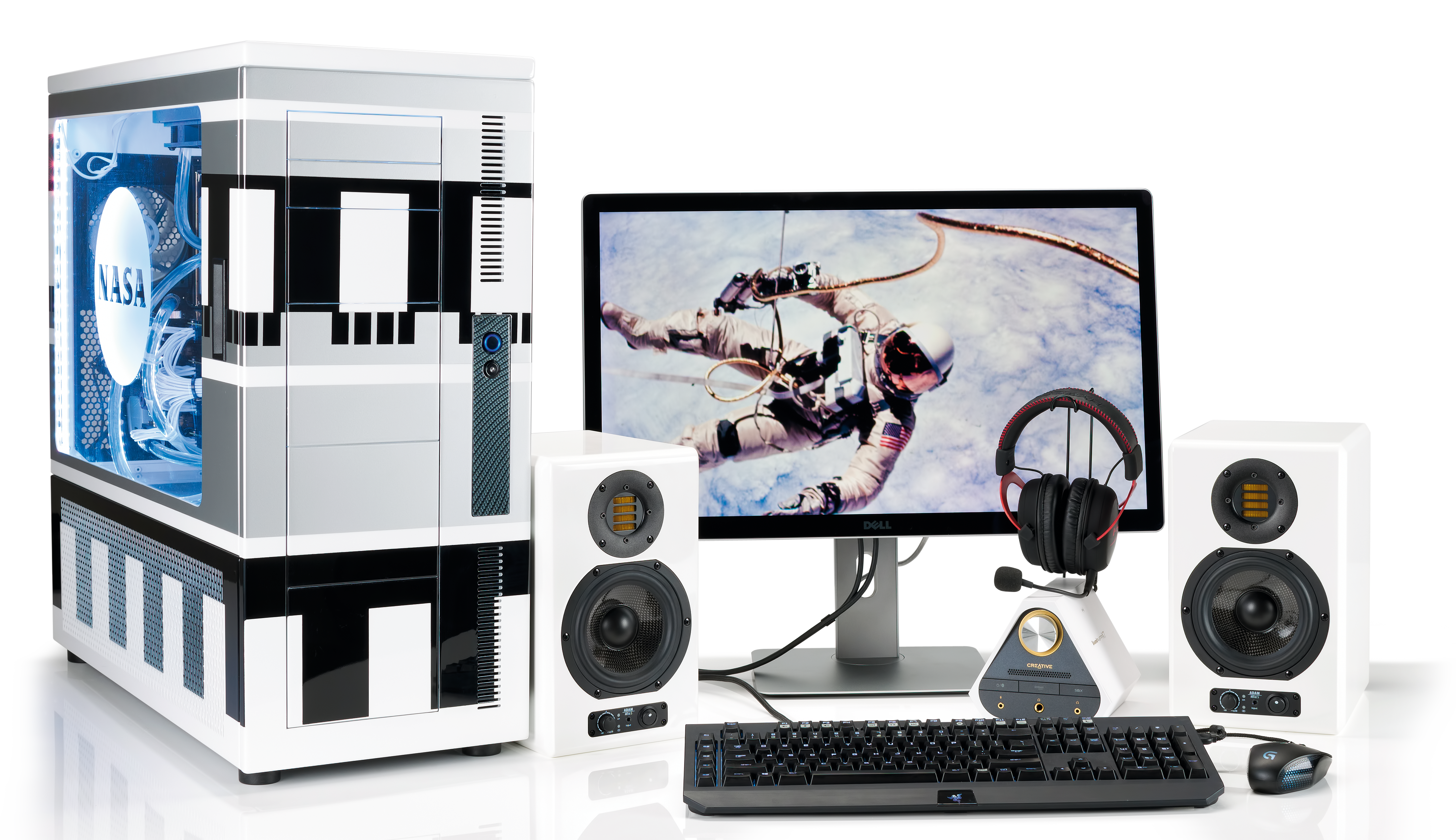Dream Machine 2015
Propelled by Titans
What the Gemini program meant for NASA and space computing
When people think of the American space program, most think about manned spaceflight programs. More specifically, they think about the Apollo moon missions or the Space Transportation System (space shuttle) program. But what happened before Apollo?

The Gemini II computer is currently housed at the Heinz Nixdorf MuseumsForum in Germany. (Image courtesy of Jan Braun/Heinz Nixdorf Museumsforum).
The Gemini program is where astronauts like Apollo 11’s Neil Armstrong, Buzz Aldrin, and Michael Collins cut their teeth in the art of flying spaceships. Gemini saw the beginnings of advanced guidance computing in manned spaceflight.
We were interested in learning more about the program, so we reached out to the Smithsonian Institution in Washington D.C. We got in contact with National Air and Space Museum public affairs specialist Alison Mitchell, who connected us with two curators, Paul Ceruzzi and Michael Neufield.
Neufield told us the Gemini Launch Vehicle was the Martin Aircraft Titan II, a converted US Air Force intercontinental ballistic missile from the 1950s.
“Gemini’s purpose was to test critical operations and technology needed for Apollo,” Neufield said. Gemini had three major objectives; first was to perfect the docking maneuvers that would later be necessary for mating a command module with a lunar excursion module (LEM), or moon lander. Gemini was also used to see if humans could survive two weeks in space, and to help train astronauts for extra-vehicular activity (also known as an EVA or spacewalk). The Gemini program also “demonstrated US space capability in the Cold War,” Neufield said. In the end, it helped the United States catch up with and ultimately pass the Soviet Union in the Space Race.
The biggest gaming news, reviews and hardware deals
Keep up to date with the most important stories and the best deals, as picked by the PC Gamer team.
Besides the social and vehicular impacts of Gemini, the program also marked the first time Americans had used digital computers in space. “The Gemini computer was the first digital computer in an orbiting, manned spacecraft,” said Ceruzzi. “It was built by IBM Federal Systems in Owego, New York, using discrete components. It did not use integrated circuits, although the transistors were made of silicon not germanium, which was an innovation at the time.”
Remember, this was 1965, when computers would take up entire rooms. In comparison, the Gemini computer was compact and light. “It was in a box approx.19x15x13 inches, and weighed 59 pounds,” Ceruzzi told us. “One addition time took 140 milliseconds. It used ferrite core memory, containing 4,096, 39-bit words (equivalent to about 20K, although the comparison is not a good one as it had a complicated word structure). Gemini VIII and later missions also had a magnetic tape auxiliary memory, of about 150K.”
The Gemini computer was used for guidance and docking, Ceruzzi said. Before Gemini, ground radar and radio stations would track and beam up commands to the vehicle, but proved too slow and imprecise for docking. Instead, NASA put a computer onboard to do the arithmetic needed for successful docking applications. The onboard computer was also capable of taking over control of the Titan II launch vehicle if needed.
And by the way, the black-and-white paint schemes for the Gemini and Apollo rockets and vehicles had a real-world purpose: cooling. This means the Gemini project was cooler in more ways than one.
Faster Than Light
All systems go
When it came time for Dream Machine 2015 to perform, our rocket was able to make the Kessel Run in less than twelve parsecs. With all eight of our CPU engines blasting at 4.5GHz, it outperformed our desktop zero-point by 11–32 percent, which is crazy considering that our ZP also uses a 5960X. You can attribute these gains to our amazing custom-cooling system from EK, which not only performed stellarly, but stayed stealthily quiet under load as well.

Perhaps the real neutron star of our Dream Machine, however, were our four water-cooled Titan X GPUs. With our spacious case, robust cooling setup, and airtight Titanium-rated 1600-watt PSU, we were able to crank the power target on these GPUs to 110%, boost the voltage by 112mV, overdrive each core clock by 205MHz and dial up the memory clock 734MHz. This allowed us to shatter speed records. Kidding aside, at the time of this writing, if you don’t count liquid nitrogen setups that traverse the galaxy through unsustainable black holes, Dream Machine 2015 is among the top five fastest PCs in both the 3DMark Fire Strike Ultra and 3DMark 11 Extreme benchmarks. How’s that for an astronomical accomplishment? We’re pretty sure we’ve inadvertently set off the beacon indicating to higher life forms that our technology has evolved enough now to be accepted within their advanced inner circle.
Seriously, though, this year’s Dream Machine blasted our desktop zero-point system out of the sky by 53–117 percent in our graphics benchmarks, which is beyond impressive considering that our ZP is also heavily armed with three GeForce GTX 980 missiles of its own. In real-world terms, Dream Machine was able to play GTAV, a super graphically demanding game, maxed out on Dell’s incredibly sharp 5K-resolution monitor with average framerates between 70–90fps. Sure, those figures are with anti-aliasing disabled, but at 5120x2880 resolution, you’d need to bust out a telescope to spot any jaggies.
Even in the storage department, our Samsung 850 Pro warp drives in RAID 0 were able to hit light speed, with sequential reads and writes measuring 1,654MB/s and 1,290MB/s, respectively. That’s among the fastest read and write speeds we’ve ever seen in our Labs. Dream Machine 2015 is not only the fastest computer we’ve ever built, but it’s the fastest computer we’ve ever tested. Ladies and gentlemen, we have done it, we have won the space race!
Benchmarks
| Row 0 - Cell 0 | Zero Point | Dream Machine 2015 |
| Stitch.Efx 2.0 (sec) | 806 | 677 |
| Proshow Producer 5 (sec) | 1,472 | 1,112 |
| x264 HD 5.0 (higher is better) | 33.8 | 37.3 |
| Batman Arkham City GOTY (fps) | 204 | 313 |
| Tomb Raider (fps) | 87.5 | 185 |
| 3DMark Fire Strike (higher is better) | 8,016 | 15,493 |
| Shadow of Mordor (fps) | 70.1 | 152.7 |
Our desktop zero-point PC uses a 5960X CPU, three GTX 980s, and 16GB of RAM. Arkham City tested at 2560x1440 max settings with PhysX off, Tomb Raider at Ultimate settings, and Shadow of Mordor at Max settings.


